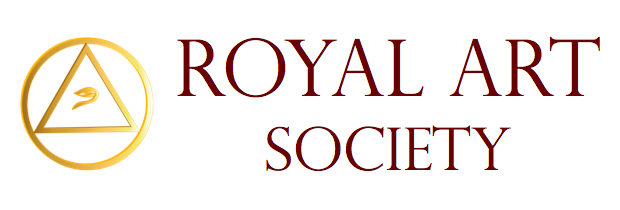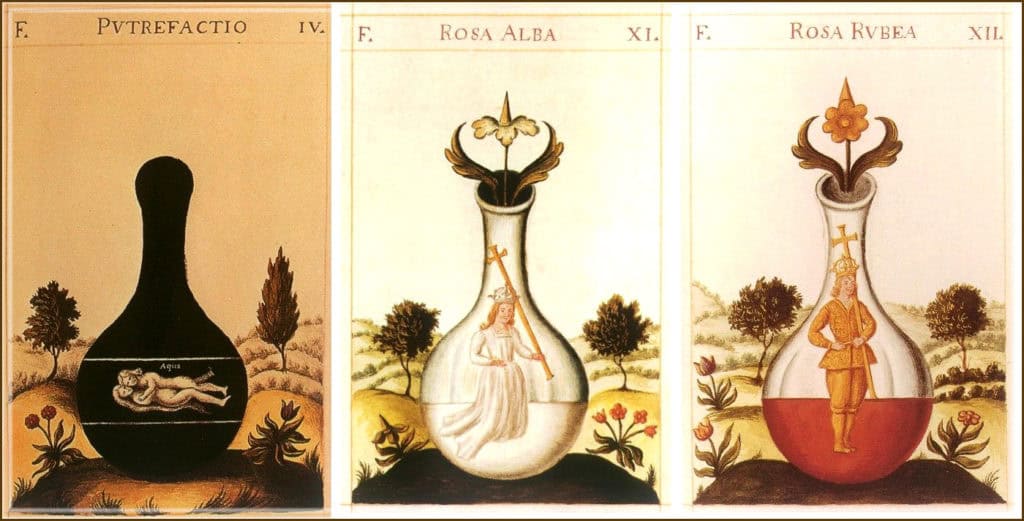
Three “Secret Societies”
The International Encyclopedia of Secret Societies and Fraternal Orders[1] describes a secret society as an exclusive organization that acts in its own special interest in favor of its members. This is a pretty broad definition.
Of course, secret societies form for various purposes, including collegiate fraternalism, politics, religion and crime. When most people hear the term “secret society” they probably think of the traditional secret societies like the Freemasons and Rosicrucians. These organizations are not secret by any means. The secret lies in modes of recognition, ritual, and teachings.
Freemasonry, for example, the oldest and largest secular fraternity in the world, is obviously not a secret organization. It is from Freemasonry that the three orders discussed here evolved. These orders, however, chose to accept women and focused on the alchemical and mystical institutions of the Western Mystery Tradition.
Formed in the late nineteenth and early twentieth centuries, the three orders discussed in this article were among the foremost European secret societies of their time, and they each survive today. These orders all developed theories and practices influenced by or based on the Western Mystery Tradition, including alchemy, the Hermetic-Kabbalistic tradition and Rosicrucianism.
Considering the operations of these three great fraternities, I would not recommend membership to everyone; the character of each order makes it a niche organization. Having known upright and good members at the highest ranks of each of these orders, I would encourage those interested to make contact and learn more from the members themselves.
Golden Dawn
Ordo Templi Orientis
Astrum Argenteum
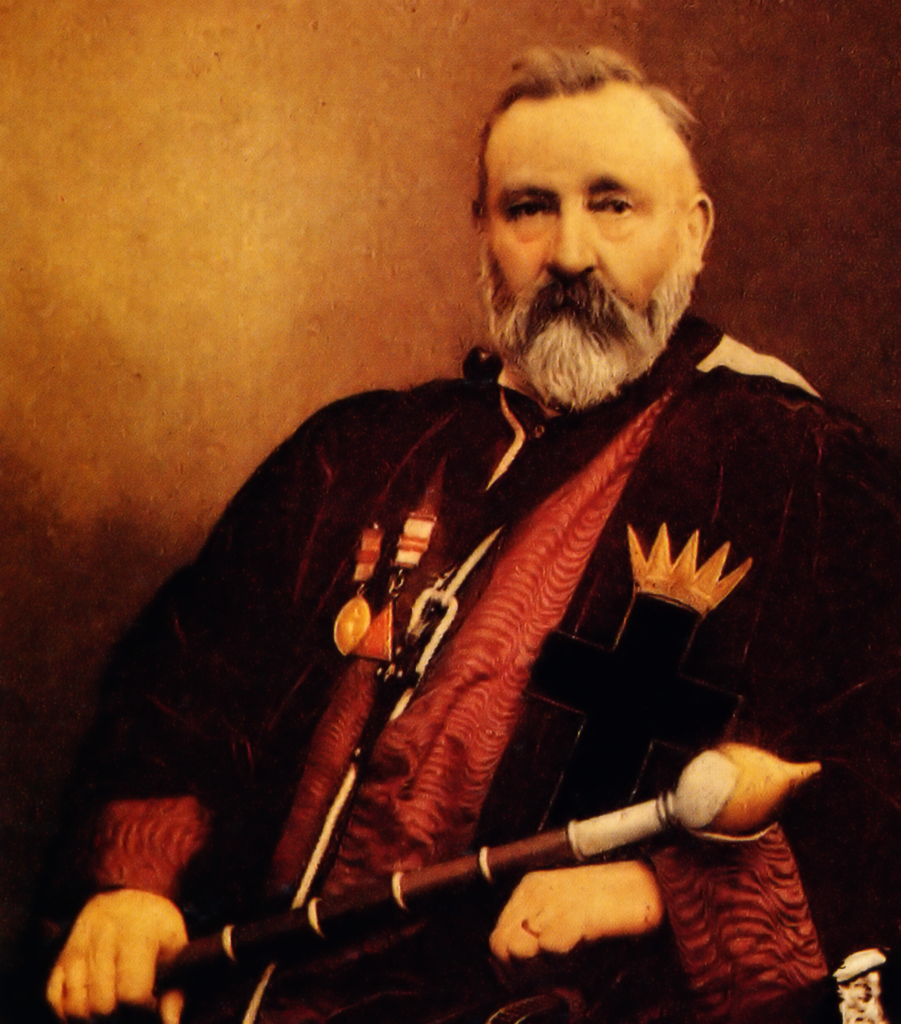
Dr. William Wynn Westcott in Rosicrucian ceremonial regalia
The Hermetic Order of the Golden Dawn
The Hermetic Order of the Golden Dawn (G.’. D.’.) was founded in the nineteenth century as a quasi-Masonic Rosicrucian society. The founders of the order were Rev. A.F.A. Woodford, Dr. W. Wynn Westcott, Dr. W.R. Woodman, and Samuel Liddell MacGreggor Mathers (1854 – 1918), all Freemasons and members of the Societas Rosicruciana in Anglia (S.R.I.A.).
After Woodman died and Westcott left the order, Mathers was left as leader. Mathers was a translator of note, making the first English translation of parts of the fundamental Kabbalistic text, the Zohar, under the title, The Kabbalah Unveiled, The Key of Solomon the King, and The Book of the Sacred Magic of Abra-melin the Mage. He also transcribed the Lemegeton (with the Goetia) from vernacular English for Aleister Crowley.
The cornerstone of the Golden Dawn was a German ritual manuscript in alchemical cipher originally claimed to have been discovered- but probably invented- by Mathers. Order records claim they originally came from the Masonic scholar Kenneth Mackenzie and were passed through the hands of the founders, deciphered by Westcott in 1887, and developed into ritual with the leadership of Mathers.
The society openly claims to be Rosicrucian and lectures on the biography of the mythological Christian Rosenkreutz, or Christian of the Rosy Cross, a magical name taken in Arabia, where he was initiated. The group invokes their spiritual father in creating an “etheric link” or connection with the life-force of the fraternity. The fraternity celebrates its primary ceremony on the equinoxes; an alchemical ritual for spiritual renewal.
The Golden Dawn was structured as ten grades under three orders: Golden Dawn proper was the outermost order, the second order was Rosae Rubeae et Aureae Crucis (the R.R. et A.C.) or the Rose of Ruby and the Cross of Gold, and the third order was the Astrum Argentum or Silver Star, consisting of “Secret Chiefs” supposedly existing as disembodied entities on the astral plane, with whom Mathers claimed to have communication.
The rituals and teachings of this Rosicrucian order are based mainly on a Kabbalistic cosmology, inner alchemy, ancient Egyptian religion, Solomonic magic, Enochian magic, Freemasonry, astrology, geomancy, aural and astral work, and tarot. The original order fractured into several branches and several survive to this day.
To learn more, consult the works of the foremost historian of the Golden Dawn, R. A. Gilbert.
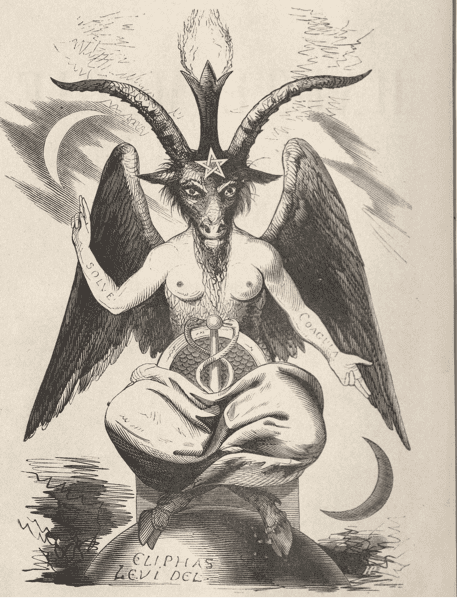
Lineages Behind the Order of Oriental Templars (O.T.O.)
Another important alchemical society born in the nineteenth century is the Ordo Templi Orientis or Order of Oriental Templars. The order, as its name implies, was one of several occult Templar orders that arose in the eighteenth century as Masonic or quasi-masonic bodies. Those orders included, for example, the Royal Order of Scotland, the Royal Order of H.R.M., Knights of the Rosy Cross, and the Rite of Strict Observance.
The Rite of Strict Observance had connections with the Order of Elect Cohens (“Chosen Priests”), the first Masonic group to openly practice magic. The Elect Cohens was founded by Martines de Pasqually in Bordeaux in 1760 to practice Solomonic magic.
The Rite of Strict Observance claimed to be led by ‘Unknown Superiors,’ a concept later borrowed by Madame Blavatsky’s Theosophical Society, MacGregor Mathers’ Hermetic Order of the Golden Dawn, and Aleister Crowley’s A.’.A.’..
The “Introduction” to the O.T.O. Manifesto of 1917 describes the O.T.O. as a “Hermetic Brotherhood of Light.” It claims to have knowledge of the symbolism of the ancient Egyptian alchemists, the Freemasons, and the Rosicrucians. In fact, the order was founded from several lineages of the Western Mystery Tradition.
William Wynn Westcott, the Supreme Magus of the Societas Rosicruciana in Anglia and a founder of the Hermetic Order of the Golden Dawn, gave Theodore Reuss a charter for the Swedenborgian Rite of Masonry in 1901. The next year, Westcott authorized Reuss to found a High Council in Germania of the Societas Rosicruciana in Anglia.
The founder of the Ancient and Primitive Rite of Freemasonry, John Yarker (1833- 1913), issued a charter to Theodore Reuss. Yarker’s rite was based on the eighteenth-century French Rite of Adoption and the Order of the Ancient and Primitive Rite of Memphis-Misraim.
Yarker’s fraternity claimed to offer the teachings of the Scottish Rite and the rites of Memphis and Misraim. It was not recognized by the Supreme Council of the legitimate Scottish Rite in England and Wales and is generally considered clandestine. The order boasted a strong membership, however, including HP Blavatsky, the matron of the Theosophical society.
Gérard Encausse (1865-1916), better known as Papus, was one of three head Bishops of the French Gnostic Catholic Church, l’Église Gnostique de France. He was a one-time member of the Theosophical Society and a member of the Hermetic Order of the Golden Dawn. Papus founded his own Masonic Christian Kabbalist Martinist Order, based on the teachings of Martinez de Pasqually, in 1884, l’Ordre des Supérieurs Inconnus. He also founded the Rosicrucian Kabbalistic Order of the Rose-Croix.
Papus never became a regular Freemason in either Anglo-Masonry or the French Grand Orient. He did, however, organize an International Masonic Conference in 1908, where he met Theodore Reuss, head of the O.T.O., and exchanged patents of their respective orders with him, making Reuss Special Inspector for the Martinist order in Germany. Papus became head of the international Rite of Memphis and Misraim when John Yarker died in 1913.
The O.T.O. was also especially influenced by the magical writings of Eliphas Levi. Éliphas Lévi Zahed, born Alphonse Louis Constant (1810-1875), was a French author on magic, alchemy, Kabbalah and other subjects related to the Western Mystery Tradition. Levi left both the Roman Catholic priesthood and later, the Masonic fraternity, to pursue his occult interests.
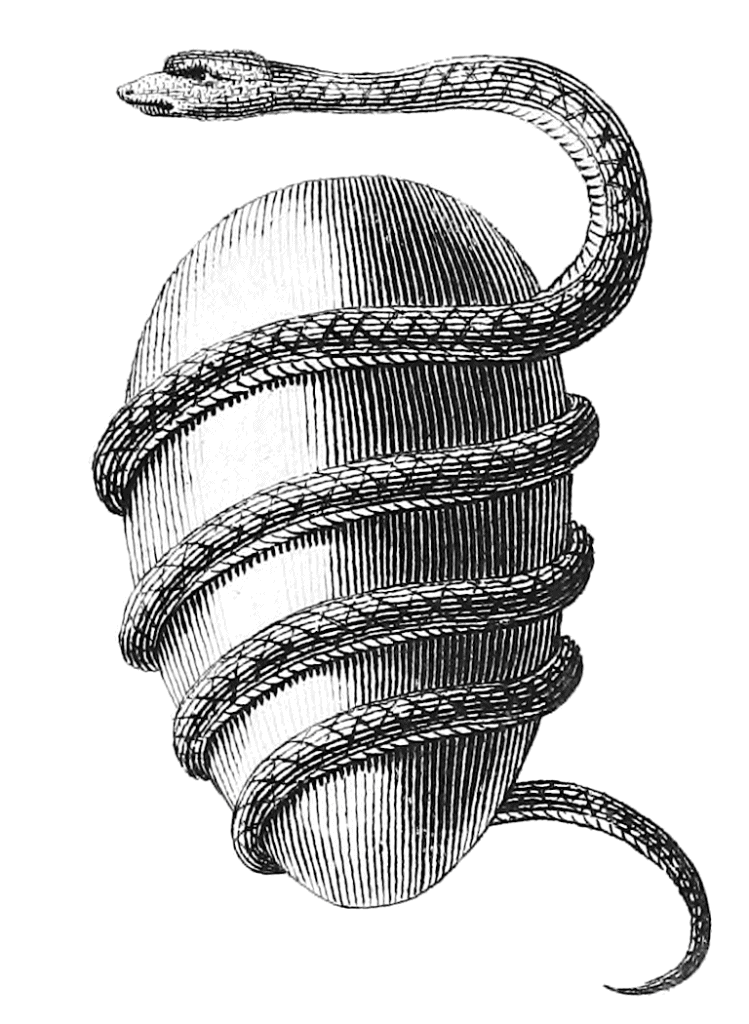
O.T.O. Alchemical Ritual
The nine degrees of the O.T.O. as published in 1973 claim to offer full instruction in Craft Masonry, in the Ancient and Accepted Scottish Rite, Rosicrucianism and Hermetic Science, and Illuminism. The ritual is explicitly Shaivite, for example the dedication to a phallic totem, and it mentions the locations of the chakras of Kundalini yoga on the body.
The ritual takes a strong view of fundamentalist Christian religion, urging against tyranny, superstition, and mostly against bigotries such as those held by some so-called “orthodox” Christians who interpret scripture literally. It refers to original sin and atonement as “old wives’ tales and foolish fables.”[2]
The ritual calls orthodox Christians “the Black Lodge” and the “Evil Ones.” The Christians, being deluded and evil, scorn the Great God Pan, identified with the Baphomet of the Templars, and denounce him as Satan.
The O.T.O. offers as instruction the works of Asian yogins and Sufis and lists examples: the Shiva Samhita, Hathayoga Pradipika, Kama Sutra, Ananga Ranga, and The Scented Garden of the Sheikh Nefzawi.
The secret instruction of the ninth degree, named “The Book of the Unveiling of the Sangraal,” is introduced as the alchemical creation of Azoth, the universal medicine or elixir sought by alchemists such as John Dee and Eliphas Levi.
The section entitled “Of the Alchymists” praises those wise and cunning men in their physical magick, their search for the Medicine of Metals, Philosopher’s Stone, Red and White Tinctures and the Elixir of Life. It describes the powers of the seven stars, the seven alchemical planets. The secret instruction goes on to classify the cosmos under mineral, vegetable, animal and divine. It claims that “GOD IS MAN” and “As above, so below.”
Jesus is part of the trinity God, God-man, and man, where Jesus the God-man is the salvation of man. This is asserted to be a doctrine shared by the brothers of the Rosie Crosse and the same as the trinity Subject, Object and Samadhi. The sacrament of Jesus Christ then becomes, for the O.T.O. member, the alchemical wedding and the elixir or germ of life.
It is stated that the whole work should be done within one’s Magick Circle. Rhythmic incantation and invocation are recommended. Ceremonial copulation between man and woman in a prepared temple is instructed.
An official O.T.O. copy of the secret of the ninth degree describes in alchemical symbolism the elixir of the Gluten of the White Eagle and the Blood of the Red Lion, a physical preparation from the union of the “Serpent” and the “Egg,” to be used magically by consumption or smearing on ritual implements.
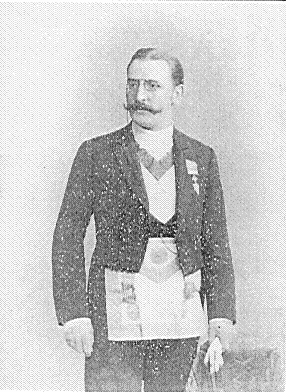
Theodor Reuss (1855–1923)
Birth of the O.T.O.
The O.T.O. was established by Theodore Reuss and the German chemist and mystic Karl Kellner (1851-1905). Kellner was a Freemason (Humanitas Lodge on the Austro-Hungarian border, 1873) and Rosicrucian who studied Eastern mysticism. He was an associate of notable Rosicrucian and Theosophist, Dr. Franz Hartmann (1838–1912).
Kellner died in 1905, just before the formal formation of the O.T.O., making Reuss the first Outer Head of the Order (O.H.O.).
The teachings of the O.T.O. were largely based on Karl Kellner’s interpretation of the philosophies of one Indian Kundalini yogin and two Arab sufi anonymi. Kellner was a member of the first Rosicrucian order in America, the Fraternitas Rosae Crucis, which taught erotic magic, formed by an American named Paschal Beverly Randolph (1825 – 1875).
The O.T.O. became popular for its secret ritual involving sun worship and sex magic. The order was modeled on spurious “Knights Templar” Masonic rites with legitimate claims to alchemical instruction that developed in the eighteenth century, such as the Royal Order of Scotland and the Rite of Strict Observance.
Under Theodor Reuss as Outer Head of the Order (O.H.O.), the O.T.O. as yet claimed no official associations with other fraternities beyond membership in the Scottish Rite and Craft Freemasonry. Yet it was under Reuss that the O.T.O. rose from obscurity to international fame. Reuss made Aleister Crowley “National Grand Master General for Great Britain and Ireland,” or head of the British O.T.O., in 1912.
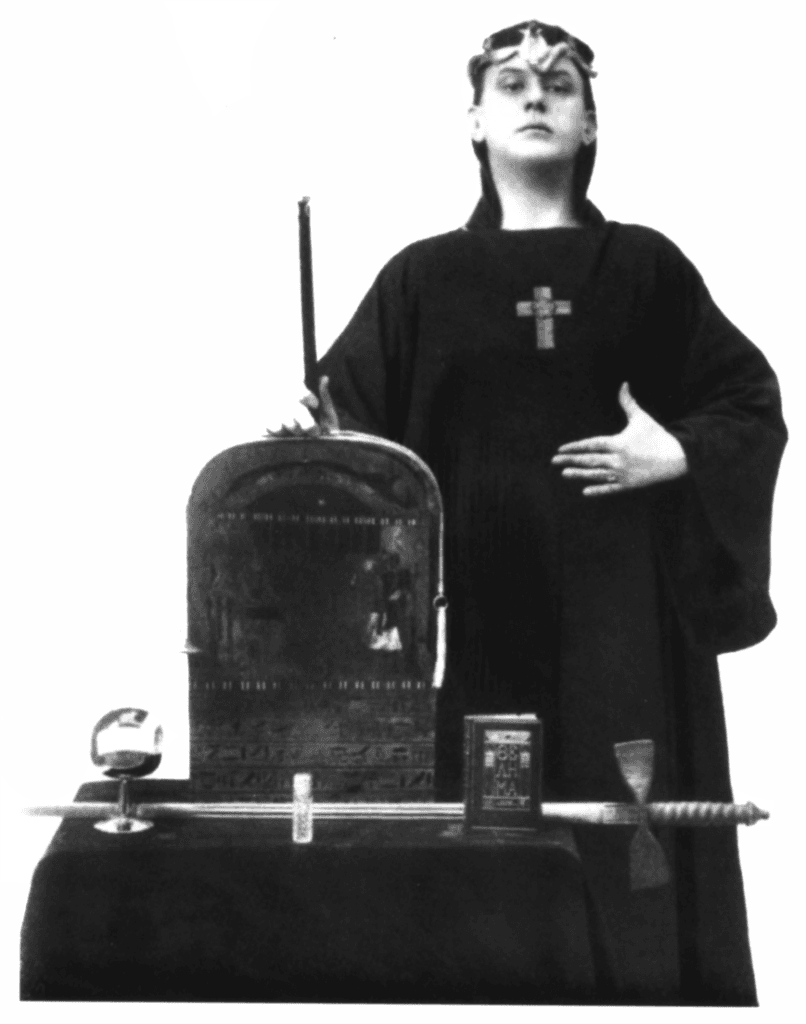
Aleister Crowley and the Argenteum Astrum
Edward Alexander (Aleister) Crowley (1875-1947) began his career in esoteric philosophy in 1896 when he wrote to Arthur Edward Waite (1857-1942) for guidance in seeking a secret society of adepts.
A.E. Waite was a member of the Masonic Craft lodge, the Societas Rosicruciana in Anglia, and the Masonic Knights Templar. He was a prolific writer on Freemasonry and on occult topics like ritual magic.
Although he was a member of the Hermetic Order of the Golden Dawn, Waite suggested Crowley consult Cloud Upon the Sanctuary by Karl von Eckartshausen (1752-1803), a Roman Catholic mystic and Theosophist.
Crowley was introduced and initiated into the Golden Dawn in 1898 by George Cecil Jones. Through this society, Crowley met Allan Bennett (1872 – 1923), who became his tutor in magic and meditation. In 1900 Crowley travelled to the United States and Mexico.
Then, passing through Japan and Hong Kong, Crowley met Bennett in Ceylon, India. Bennett had been ordained as a Theravada Buddhist monk in Burma (Myanmar) and was practicing Raja yoga while studying Shaivite Hinduism.
In 1904 Crowley was in Cairo, Egypt, invoking ancient Egyptian gods in the desert, when he channeled the Thelemic inspired scripture, The Book of the Law. He informed Mathers that since this revelation he had succeeded him as chief adept of the order by authority of the Secret Chiefs.
In 1907 Crowley officially organized his own conception of the third order of the Golden Dawn, the Argenteum Astrum or A.’.A.’., as a distinct organization and began to publish its periodical, The Equinox.
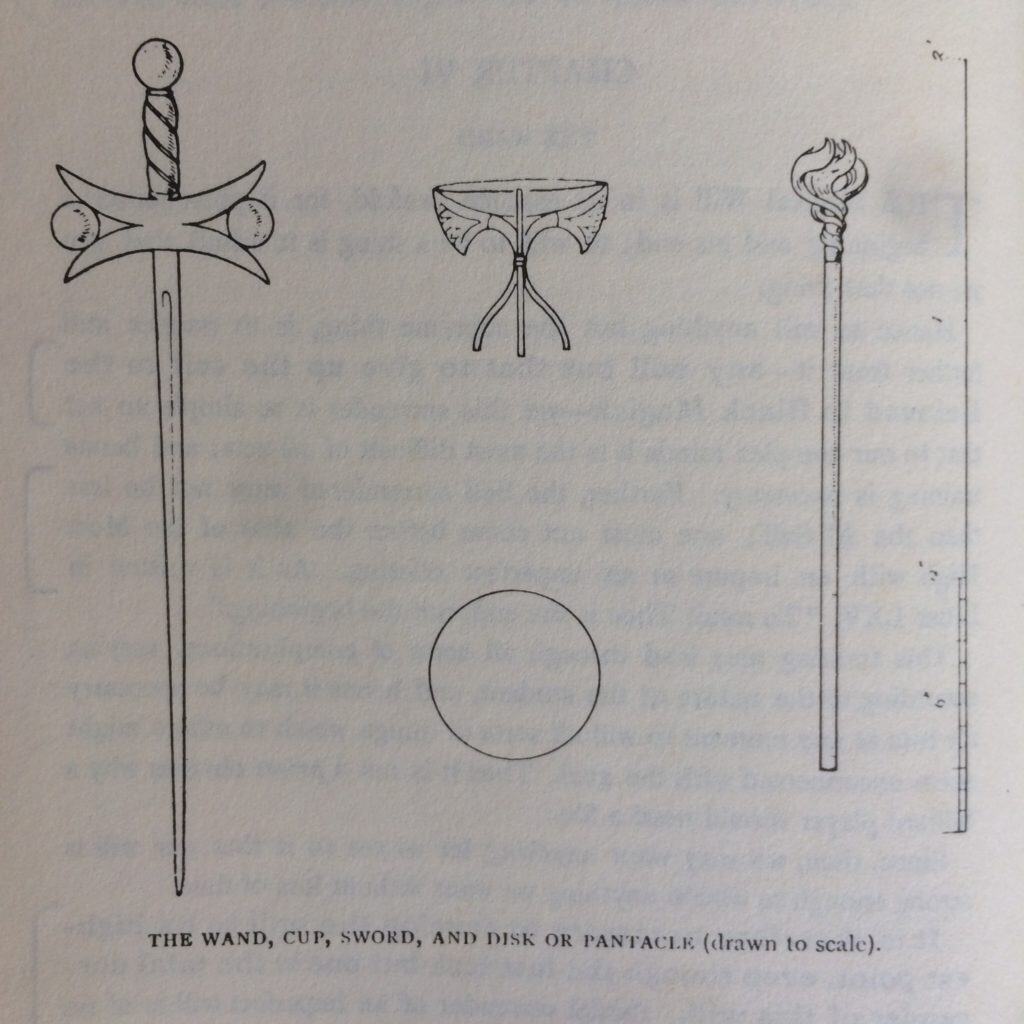
The A.’.A.’. was the training ground for Crowely’s school of Thelema. Thelema in Greek means “True Will.” Every individual’s True Will is identical with the Will of the cosmos, or destiny. Aleister Crowley’s interpretation of the alchemical Great Work was “Do what thou Wilt shall be the whole of the Law.”
This translates to modern English to mean every individual (the microcosm) must follow their own innermost will, or True Will in order to accord with the cosmos (the macrocosm). In the Thelemic view, everything from romantic attraction to mortal combat is the effect of destiny regardless of freewill. A harmonious will is the cause of peace of mind and happiness. To oppose the True Will is to put oneself against oneself.
Crowley conveyed his view of the common centrality, or equality, of every individual person within the cosmos with the catchphrase “Every man and every woman is a star.” Crowley’s philosophy is also expressed as “Love is the Law, love under will,” implying that while we are each alone in this universe, we are bound together by love.
It is upon the model of Patanjali that Aleister Crowley based his meditation, as dictated by Mari Desti in Crowley’s 1911 Book Four. Book 4, as it is sometimes known, is a very short treatise of alchemy, magic and yoga. The book is divided into two parts: Part I was “Meditation,” an essay on mysticism; Part II, “Ceremonial Magick,” describes alchemical ritual magic practiced as a preliminary exercise in preparation for yoga.
In his “Preliminary Remarks” Crowley praises Buddhism and declares that the legendary ancient Chinese Daoist philosopher “Lao Tze (Laozi) is one of our best examples of a man who went away and had a mystical experience; perhaps the best of all examples, as his system is the best of all systems.”
Book Four describes the alchemical Great Work as the union of subject and object, represented by, among other things, the ankh, the lingam and yoni, the “chymical nuptials” or marriage feast, the Tau of the Sephirot, and the rosy cross. In 1929 Crowley published Part Three of Book Four, his magnum opus, which he called Magick in Theory and Practice. In Magick Crowley described the framework of the A.’.A.’..
An excellent table showing the correspondences between the degrees of the Scottish Rite, the Rite of Memphis, the Rite of Misraim, and the O.T.O., is to be found in Martin P. Starr’s The Unknown God: W. T. Smith and the Thelemites (2003)[3]. To learn more about the A.’.A.’. I highly recommend this rare book authored by someone in a unique position of experience and knowledge.
Crowley regarded the A.’.A.’. as the inner circle, a school for gifted initiates to train and explore the esoteric realms independently under the guidance of superiors. Crowley conceived that he would need an outer school for public consumption. That would be the function of the O.T.O.
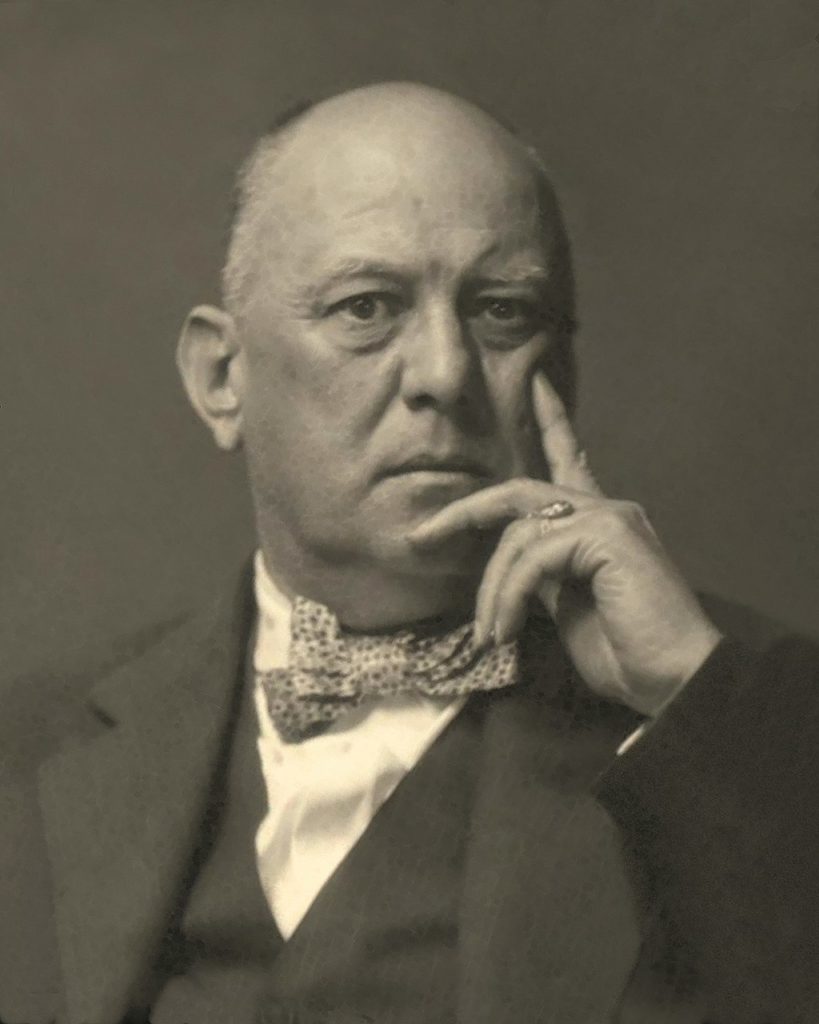
Aleister Crowley, Thinker,
31 December, 1924
Crowley’s O.T.O.
Aleister Crowley was able to convert Theodor Reuss to his religion, Thelema, and with that, the British O.T.O. officially became a Thelemic order. Crowley revised the Gnostic Mass of Reuss’s Gnostic Catholic Church accordingly. When Reuss passed in 1922 Crowley became the Outer Head of the Order from 1922 until his death in 1947.
Due to Nazi persecution of Freemasonry and related orders the O.T.O. remained active mainly in the United States until eventually it established headquarters in California. Karl Germer (1885-1962), Crowley’s man in Germany, was arrested by the Gestapo, the Nazi “secret state police.” He was sent to a concentration camp on the charge of seeking students for Crowley, whom they identified as a Freemason.
Germer would go to the United States to become Crowley’s second in command and Grand Treasurer General of the O.T.O. The O.T.O in Europe had been more or less dissolved by Nazi persecution during the Second World War. Agape Lodge in Pasadena, California was the only lodge left after the war.
However, the people of the United States were effectively as oppressive of the O.T.O. as the Nazis. Several members were forced to quit their association with Thelema due to threats of being made redundant from their employers on the grounds of immorality. When Crowley died in 1947, Karl Germer became “Caliph,” the international head of the O.T.O.
Grady Louis McMurtry (a.k.a. Hymenaeus Alpha) (1918-1985) was a Thelemite from the Midwest United States. Crowley made him a IXth Degree member of the O.T.O. after meeting with him several times. Later, McMurty would be put in charge of California and the rest of the United States.
When Germer passed in 1962, McMurty, with the support of Dr. Israel Regardie (1907–1985) and Gerald Yorke, declared himself the new Caliph of the O.T.O. Three other contenders claimed succession to the headship of the order: Kenneth Grant in Britain, Hermann Metzger in Switzerland, and Marcelo Ramos Motta in Brazil.
In 1969 past members of the O.T.O. joined together to officially revive the order and in the following years the order grew.
When Grady McMurty died in 1985 the Grand Treasurer General, Bill Heidrick, took custodial interim control of the O.T.O. until a new Caliph, known as “Hymenaeus Beta,” was elected that year by the active IX° members of O.T.O. Today the legitimate O.T.O. holds the copyright to the works of Aleister Crowley.
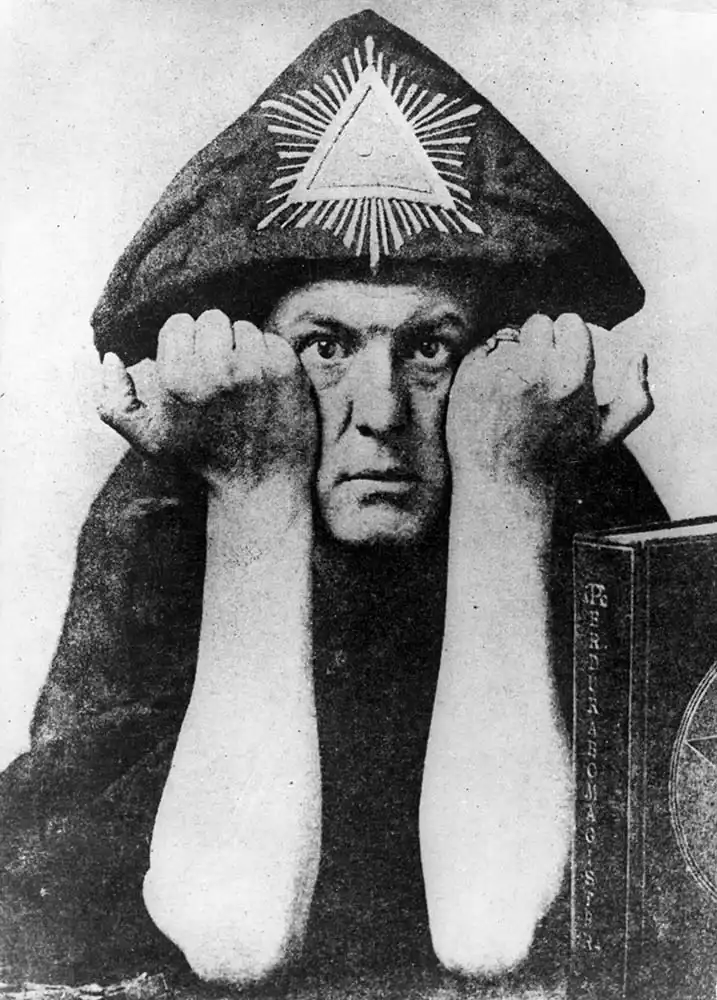
Sources
[1] Alan Axelrod, International Encyclopedia of Secret Societies and Fraternal Orders, Checkmark Books, 1997.
[2] Francis King, The Secret Rituals of the O.T.O., The C.W. Daniel Company, London, 1973.
[3] Starr, Martin, The Unknown God, W.T. Smith and the Thelemites, Teitan Press, Bolingbook, Illinois, 2003, pp. 27-27.
